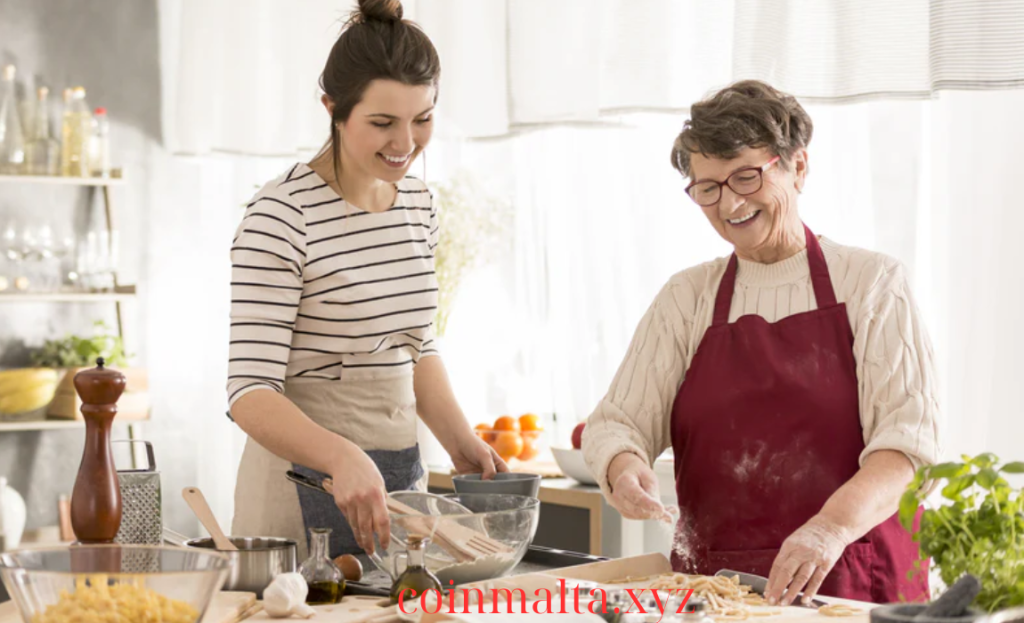Home Food Safety
Essential Home Kitchen Food Safety Tips for Every Cook
Maintaining proper food safety in your home kitchen is crucial to preventing foodborne illnesses and ensuring the health of everyone at the table. From handling raw ingredients to storing leftovers, understanding the basics of kitchen hygiene can make all the difference. Whether you’re an experienced cook or a beginner, implementing these essential food safety tips will keep your kitchen clean and your meals safe.
This guide outlines the most important home kitchen food safety tips that every cook should follow, helping you avoid common risks and keep your kitchen a safe environment.
1. Wash Hands and Surfaces Regularly
Proper handwashing is one of the simplest yet most effective ways to prevent the spread of bacteria and foodborne illnesses. Clean hands and surfaces prevent cross-contamination, especially when handling raw meat, seafood, or eggs.
Key Tips:
- Wash Your Hands: Before cooking, after handling raw foods, and after touching your face or hair, wash your hands with soap and water for at least 20 seconds.
- Sanitize Surfaces: Disinfect countertops, cutting boards, and utensils with hot, soapy water or a mild bleach solution after preparing raw foods.
- Use Paper Towels: Use disposable paper towels to wipe surfaces clean. If you use kitchen cloths, wash them frequently in hot water.
2. Separate Raw and Cooked Foods
Cross-contamination occurs when harmful bacteria from raw foods, such as meat or seafood, come into contact with ready-to-eat foods or cooked items. Keeping raw and cooked foods separate at all times is crucial for food safety.
Key Tips:
- Use Separate Cutting Boards: Have separate cutting boards for raw meat, poultry, and seafood, and another for fresh fruits, vegetables, and cooked foods.
- Keep Raw Meat Away from Other Foods: Store raw meat, poultry, and seafood in sealed containers at the bottom of the refrigerator to prevent their juices from dripping onto other foods.
- Use Different Utensils: Avoid using the same knives, tongs, or utensils for raw and cooked food without washing them thoroughly in between.
3. Cook to the Right Temperature
Cooking food to the correct internal temperature kills harmful bacteria and pathogens, making it safe to eat. Use a food thermometer to ensure your dishes are cooked thoroughly, especially when preparing meat, poultry, or seafood.
Key Tips:
- Meat Temperature: Cook beef, pork, lamb, and veal steaks, chops, and roasts to at least 145°F (63°C), followed by a 3-minute rest time.
- Poultry Temperature: Cook poultry (chicken, turkey, duck) to at least 165°F (74°C).
- Ground Meat Temperature: Ground meats should be cooked to at least 160°F (71°C) for safe consumption.
- Seafood Temperature: Fish should reach 145°F (63°C) and should appear opaque and flake easily with a fork.
- Eggs: Ensure eggs are cooked until the yolks and whites are firm, and avoid eating raw or undercooked eggs in recipes.
4. Proper Food Storage and Leftover Management
Storing food correctly is essential for keeping it fresh and safe to eat. Refrigerating and freezing foods promptly can slow the growth of bacteria, while using airtight containers ensures food stays uncontaminated.
Key Tips:
- Refrigerate Promptly: Refrigerate perishable items like dairy, meat, and seafood within 2 hours of purchase or cooking. If the temperature is above 90°F (32°C), refrigerate within 1 hour.
- Store Leftovers Safely: Use shallow, airtight containers to store leftovers in the refrigerator. Consume leftovers within 3–4 days, or freeze them for longer storage.
- Check Refrigerator Temperature: Keep your refrigerator at or below 40°F (4°C) and your freezer at 0°F (-18°C) or lower to slow bacterial growth.
5. Thaw Food Safely
Thawing food incorrectly can lead to the growth of harmful bacteria. Avoid thawing foods at room temperature and instead use safer methods to ensure food remains safe.
Key Tips:
- Refrigerator Thawing: Thaw frozen foods in the refrigerator. This method is slow but the safest for keeping food at a safe temperature.
- Cold Water Thawing: Place food in a sealed, leak-proof bag and submerge it in cold water. Change the water every 30 minutes to ensure the food continues to thaw safely.
- Microwave Thawing: Use the microwave’s defrost setting for quick thawing, but cook the food immediately after thawing since parts of the food may begin to cook during the process.
6. Mind Expiration Dates
Pay close attention to expiration dates on perishable items to avoid consuming food past its prime, which can increase the risk of foodborne illness.
Key Tips:
- “Use By” Dates: These indicate the last date for peak quality. For safety, consume or freeze food before the “use by” date.
- “Best By” Dates: These are for quality rather than safety. While food may still be safe to eat after this date, the quality may decline.
- FIFO (First In, First Out): Practice rotating your food stock by using older items before newer ones to reduce waste and ensure food safety.
7. Clean Produce Thoroughly
Even though fruits and vegetables are often consumed raw, they can still harbor harmful bacteria from the soil or handling. Properly cleaning produce helps remove dirt, bacteria, and pesticides.
Key Tips:
- Rinse Under Running Water: Wash all fruits and vegetables under running water, even if you plan to peel them. Use a vegetable brush to scrub firm produce like potatoes and cucumbers.
- Dry with a Clean Towel: After washing, dry produce with a clean paper towel or kitchen cloth to further reduce bacteria.
8. Avoid Raw Dough and Batters
Consuming raw dough or batter can pose a risk because of raw eggs and flour, both of which can carry harmful bacteria like Salmonella or E. coli.
Key Tips:
- No Raw Egg Consumption: Avoid eating raw dough or batter containing raw eggs. If your recipe calls for raw eggs (e.g., cookie dough or homemade ice cream), use pasteurized eggs or egg substitutes.
- Be Cautious with Flour: Raw flour can also carry bacteria, so avoid consuming any raw dough made with flour, and always wash your hands and surfaces after handling flour.
9. Use Proper Food Handling Techniques
How you handle food from the grocery store to the kitchen can affect its safety. Proper food handling practices help minimize the risk of contamination.
Key Tips:
- Check Labels and Packaging: Ensure that food packaging is intact and check for any unusual odors or discoloration before buying and cooking food.
- Avoid the Danger Zone: Keep food out of the “danger zone” (40°F to 140°F, or 4°C to 60°C), where bacteria can grow rapidly.
- Don’t Rinse Meat or Poultry: Rinsing raw meat or poultry can spread bacteria to surrounding surfaces. Instead, cook it to the proper temperature to kill bacteria.
10. Monitor Leftovers and Reheating
When reheating leftovers, it’s important to ensure they reach a safe internal temperature to kill any lingering bacteria.
Key Tips:
- Reheat to 165°F (74°C): Always reheat leftovers to an internal temperature of at least 165°F (74°C) before serving.
- Avoid Multiple Reheats: Try to reheat leftovers only once to minimize the risk of bacterial growth. If you have a large portion of leftovers, divide them into smaller portions for reheating.
- Stir or Rotate During Reheating: When using the microwave, stir or rotate food halfway through to ensure even heating and avoid cold spots where bacteria can survive.
Conclusion: Keeping Your Kitchen Safe
By following these essential food safety tips, you can create a clean and safe cooking environment in your home kitchen. Practicing proper hygiene, storing food correctly, and using safe cooking techniques will help you avoid foodborne illnesses and ensure that your meals are healthy, delicious, and safe to eat. Whether you’re cooking for yourself, your family, or guests, prioritizing food safety is key to enjoying every meal with confidence.

